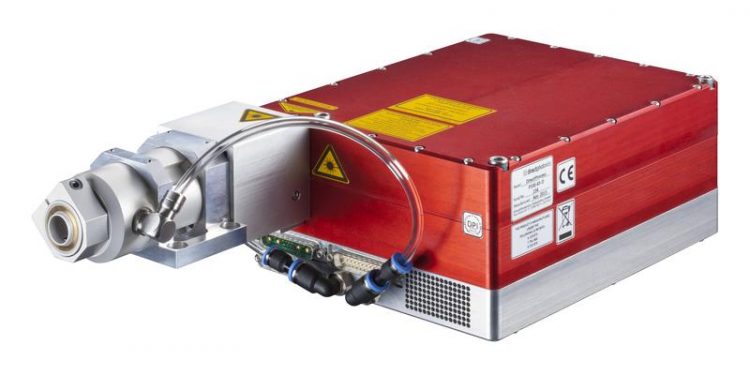Safe investments in innovation: LZH develops assessment criteria for laser-based Technologies

In the LASHARE subproject CUDE the DPI diode laser system is being further developed for metal processing at 2 kW output power with constant high beam quality. © DirectPhotonics Industries GmbH
In a cross-cutting subproject lead by the LZH assessment criteria for new technologies shall be determined. In the future, these criteria shall help to reliably evaluate if and how new laser-based products can attain market maturity. The scientists of the research institute themselves are pushing forward three prototypes in the fields of metal cutting, 2 µm lasers and a mobile processing unit.
Normally, innovative laser-based products take a long time before they are ready for industry. The small and medium-sized enterprises (SMEs) developing the technologies very often lack the know-how and resources to match the technologies to the demands of industry. Therefore, investors consider these technologies to be too risky. In consequence, many innovative ideas never make it beyond the development level or small series production.
In the EU project LASHARE, in a cross-cutting subproject lead by the Laser Zentrum Hannover e.V. (LZH), relevant assessment criteria for new laser-based products shall be developed. Based upon these criteria SMEs shall be able to evaluate their developments more easily and provide potential investors with more security.
Evaluating the costs and benefit of new technologies
The criteria costs, required time and resources for system integration, modularity of the components, interfaces to other systems and universal applicability (plug & play) shall be made measurable to make the costs and benefits of the new technology visible. The LZH cooperates closely with the five research partners of the project and collects information of the worldwide operating manufacturers. The criteria are tested using existing pre-commercial products which are being further developed within the LASHARE subprojects.
LZH: bringing three products to the market
Within the scope of the EU project the LZH is also further developing three technologies. In the subproject CUDE, a 2 kw diode laser with high beam quality for metal processing shall be developed and integrated into a laser cutting machine. For the MOBILAS subproject a mobile processing unit for shipbuilding and large steel constructions is being further developed to weld, cut and ablate corrosion and paint. A 2 µm laser and beam analysis system is being further developed and tested under industrial conditions in the TWOMICRO subproject. Plastics, such as plexiglass, shall be processed with this system. All these products are fully functional under laboratory conditions and shall now be further developed to prove operation in practice and to rapidly transfer them into industry.
About LASHARE
LASHARE is the acronym of a European project involving more than 30 SMEs from across Europe, large industrial enterprises and six of the most renowned laser research institutes. LASHARE is being coordinated by the Fraunhofer Institute for Laser Technology (ILT).
The main objective is to turn innovative prototypes into robust solutions which can be transferred to industry. In each subproject SMEs, research institutes and large industrial enterprises are represented. Thus, the laser-based product will perfectly match the demands of the industry.
http://www.lashare.eu – project website
Media Contact
All latest news from the category: Machine Engineering
Machine engineering is one of Germany’s key industries. The importance of this segment has led to the creation of new university degree programs in fields such as production and logistics, process engineering, vehicle/automotive engineering, production engineering and aerospace engineering among others.
innovations-report offers informative reports and articles covering technologies such as automation, motion, power train, energy, conveyor, plastics, lightweight construction, logistics/warehousing, measurement systems, machine tools and control engineering.
Newest articles

NASA: Mystery of life’s handedness deepens
The mystery of why life uses molecules with specific orientations has deepened with a NASA-funded discovery that RNA — a key molecule thought to have potentially held the instructions for…

What are the effects of historic lithium mining on water quality?
Study reveals low levels of common contaminants but high levels of other elements in waters associated with an abandoned lithium mine. Lithium ore and mining waste from a historic lithium…

Quantum-inspired design boosts efficiency of heat-to-electricity conversion
Rice engineers take unconventional route to improving thermophotovoltaic systems. Researchers at Rice University have found a new way to improve a key element of thermophotovoltaic (TPV) systems, which convert heat…



